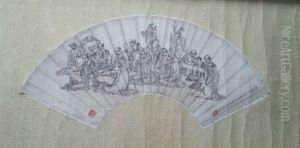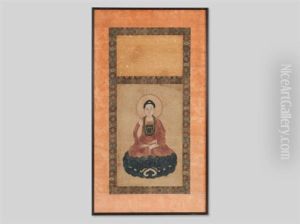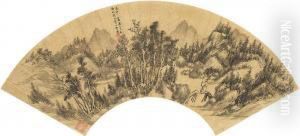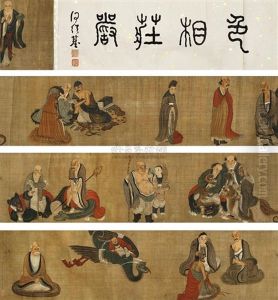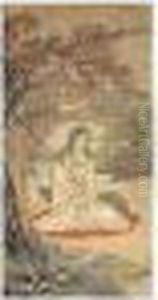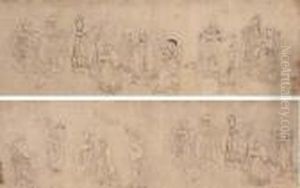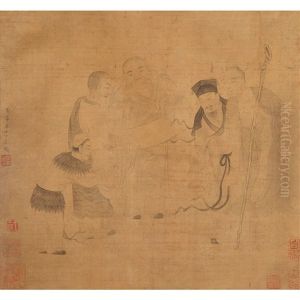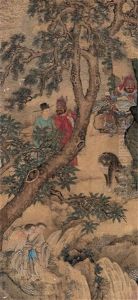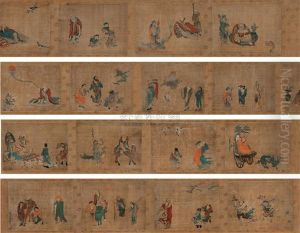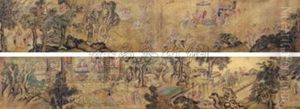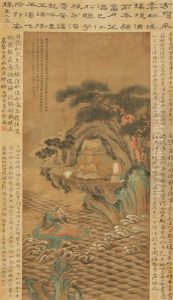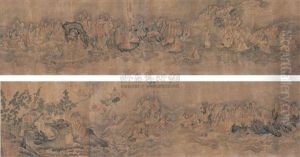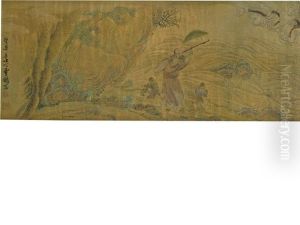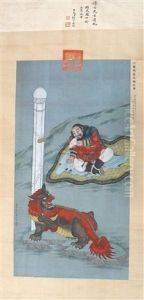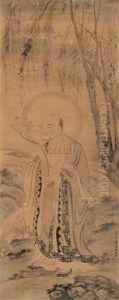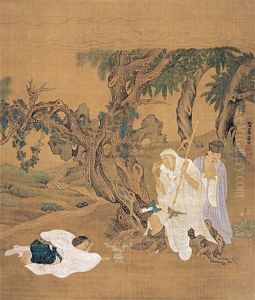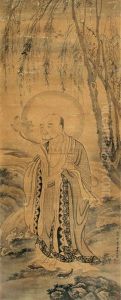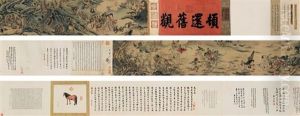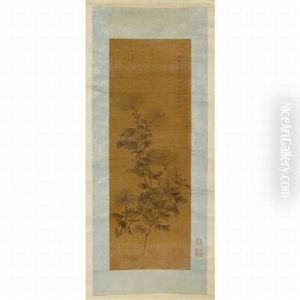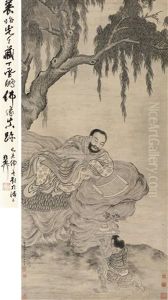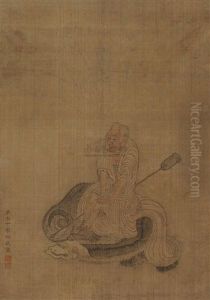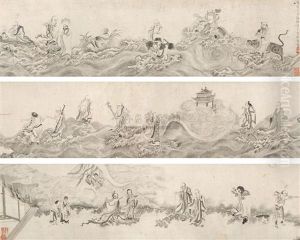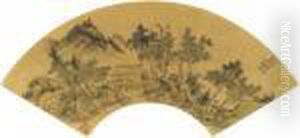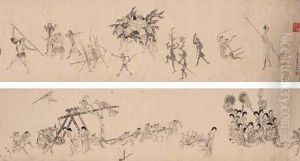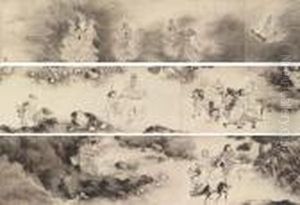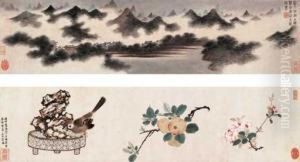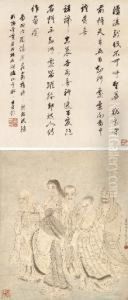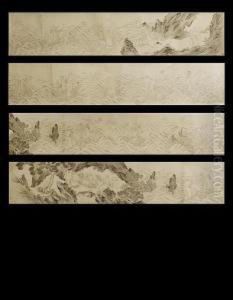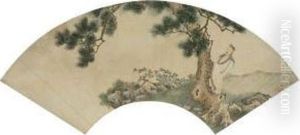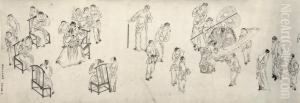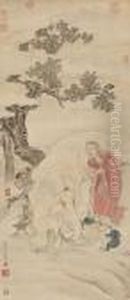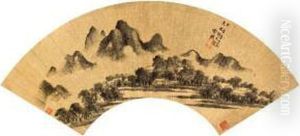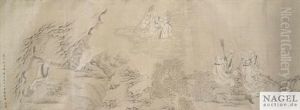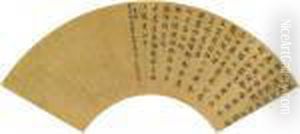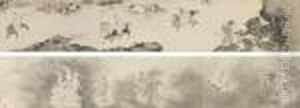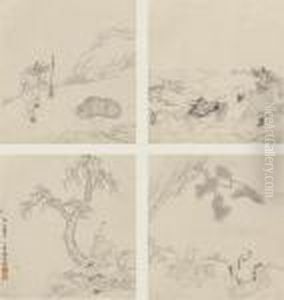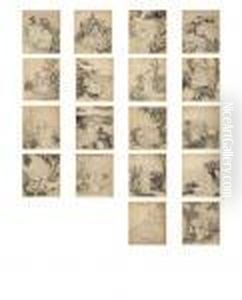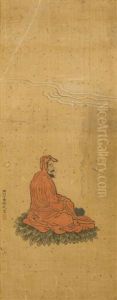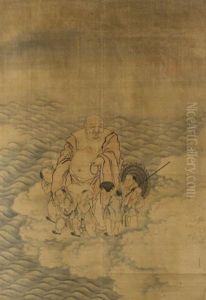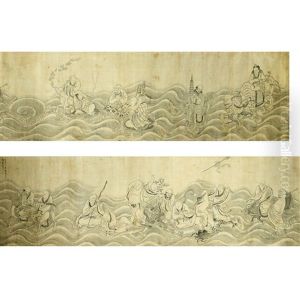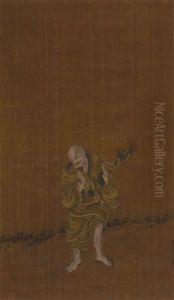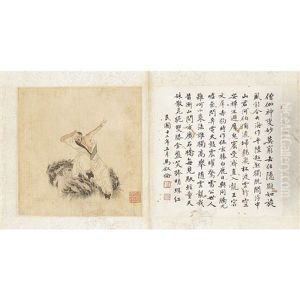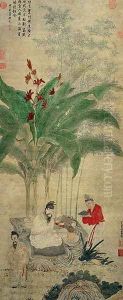Ding Yunpeng Paintings
Ding Yunpeng was a prominent Chinese painter during the Ming Dynasty, particularly known for his work in figure painting and landscapes. Born in the year 1547 in Xiuning, Anhui Province, Ding was a part of a flourishing period of Chinese art. He was active during the late Ming Dynasty, a time when the literati painting style was highly valued and widely practiced by scholar-artists.
Despite coming from a relatively humble background, Ding Yunpeng demonstrated a remarkable talent for painting from a young age. He was said to have studied under the tutelage of the artist Chen Chun, and his work often reflected the influence of his teacher. Ding Yunpeng's paintings are characterized by their delicate brushwork and refined elegance, which was typical of the literati style of the period.
Throughout his career, Ding explored various themes including Taoist and Buddhist figures, which he is particularly noted for. His religious paintings are often imbued with a sense of serenity and spiritual depth. He was also proficient in landscape painting, capturing the essence of China's natural beauty through his use of ink and brush. His landscapes are marked by their tranquil and harmonious compositions, embodying the traditional Chinese philosophy that emphasizes the unity of humanity and nature.
Ding Yunpeng's work also reflected the broader cultural and artistic shifts of his time. During the late Ming Dynasty, there was a growing interest in individual expression and a move away from the more rigid, formal styles of previous eras. Ding's paintings thus exhibit a degree of personal style and innovation while still adhering to the revered traditions of Chinese painting.
Despite his achievements, Ding Yunpeng was not as widely recognized during his lifetime as some of his contemporaries. Nevertheless, his contribution to Chinese art was significant, and his works have been increasingly appreciated for their artistic merit and historical importance. Today, Ding Yunpeng is considered an important figure in the history of Chinese art, and his paintings can be found in various art collections, both in China and internationally.
Ding Yunpeng passed away in the year 1628, leaving behind a legacy that has been studied and revered by generations of art historians and enthusiasts. His art continues to be a subject of admiration for its graceful execution, depth of feeling, and embodiment of the Ming Dynasty's artistic ideals.
